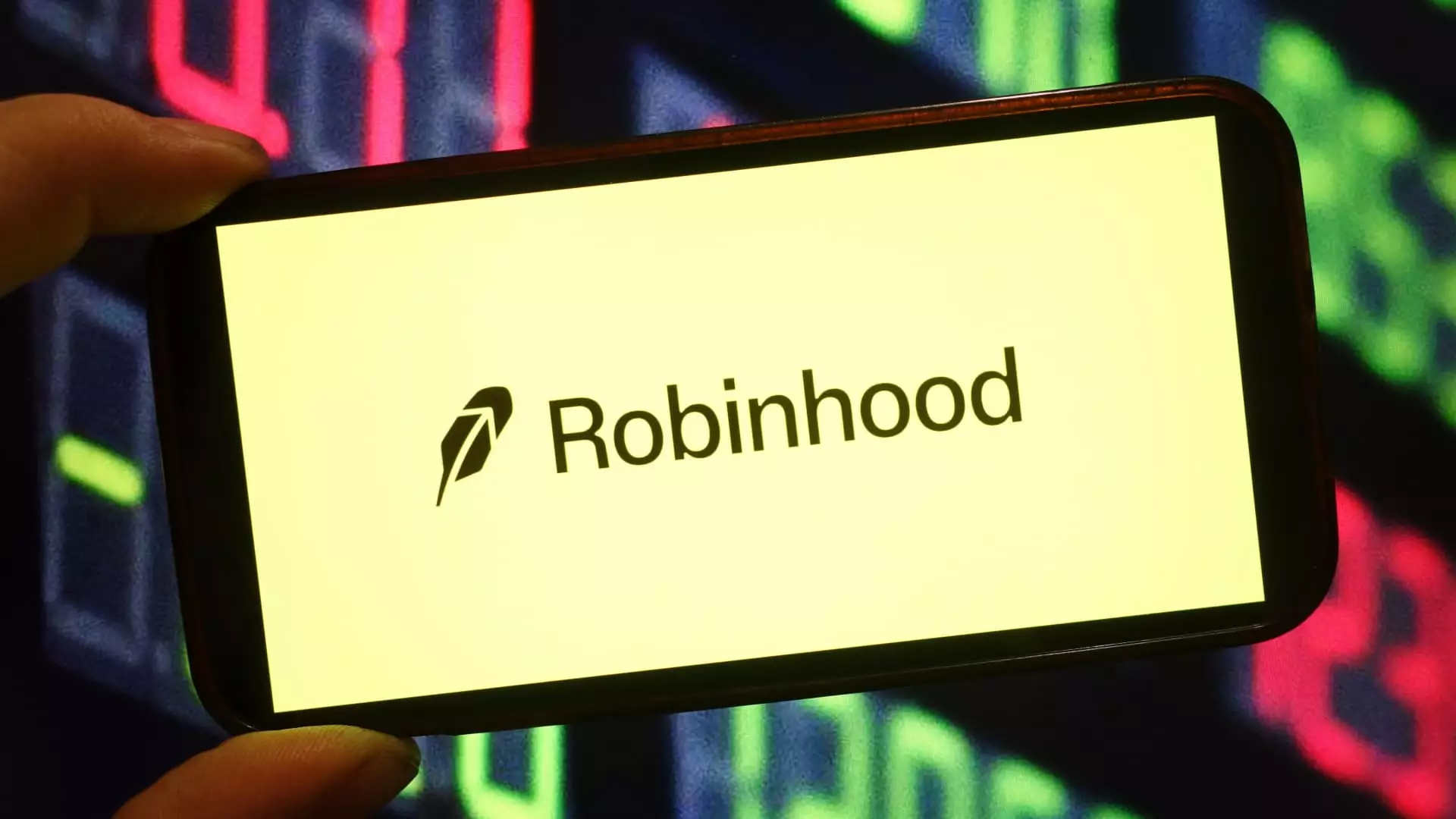Recent fluctuations in the stock market have sparked interest and speculation, particularly surrounding retail trading platform Robinhood. Despite a surge of 8% on one Wednesday morning following a broader market uplift, the overall sentiment surrounding Robinhood’s stock remains one of caution, as advocated by financial expert Courtney Garcia from Payne Capital Management. Investors must recognize that a brief spike in stock performance does not equate to long-term sustainability, a lesson that many seem to overlook in the chaotic world of trading.
The initial enthusiasm around Robinhood was fueled by President Trump’s pro-cryptocurrency sentiments, which generated waves of excitement and optimism. Unfortunately, this exuberance is misleading. A closer inspection reveals that much of the anticipated growth associated with cryptocurrency trading could already be baked into the stock’s current price. Investors looking for a quick win amidst the volatility may find themselves disappointed, as the stock’s value appears overstated due to the inflation of speculative trading.
Caution Against Short-term Trading Traps
The fluctuating nature of Robinhood’s stock indicates a classic example of “risk-on” trading behavior, where investors leap into assets that can fall just as quickly. Garcia’s advice to steer clear of Robinhood reflects a prudent approach; the company’s trading volumes may be on the rise, but these metrics do not inherently justify an increase in stock value. Relying solely on spikes in trading activity is perilous; a patient investor understands that sustainable growth is primarily contingent on deeper financial health and strategic positioning.
Absurdly high upside estimates—over 74% as projected by analysts—further complicate the narrative. Investors seem to be trading hope rather than tangible value. Reality sets in that unless Robinhood can successfully leverage lasting operational improvements and expand its market share without the volatility of speculative investments, the stock may not yield the returns currently anticipated. Essentially, those who rely on these buoyant projections may be setting themselves up for disillusionment.
Choosing the Right Investments: Lessons from AT&T and Johnson & Johnson
In stark contrast to Robinhood’s precarious standing, both AT&T and Johnson & Johnson offer more stable investment opportunities, underscoring the value of long-term strategic foresight versus speculative excitement. AT&T, a company undergoing a transformation, is viewed favorably due to its robust plans for debt reduction and strategic buybacks. With its dividends yielding about 4.27%, AT&T is a quintessential example of a company that balances risk with reward. Analysts rate AT&T as a solid buy, believing there is potential for around 5% upside in the coming year. This reflects a well-rounded approach—one steeped in financial prudence rather than mere speculation.
Similarly, Johnson & Johnson emerges as a traditional value stock. While Garcia expressed neutrality towards its growth potential, she aptly pointed out its resilience during economic downturns and its consistent dividend yield of nearly 2.99%. Unlike Robinhood, which is shackled by dependence on market trends and speculative drivers, Johnson & Johnson holds a reputation for steadiness. It may not offer explosive growth, but for investors focused on a balanced portfolio, it’s seen as a viable option for generating reliable returns.
The Stark Reality of Investment Choices
Investing in stocks is not merely an exercise in riding the latest waves of market excitement; it demands a strategic outlook that evaluates long-term sustainability over momentary gains. Robinhood’s stock may hover in an enticing quick-profit territory, but the threats of volatility and unrealistic market projections should act as stark warnings to investors. In contrast, companies like AT&T and Johnson & Johnson exhibit foundational strength that can yield dependable returns.
In this era of rampant speculation and fleeting stock surges, discerning investors must learn to navigate through the noise of hype while seeking stable, value-driven opportunities. Embracing a strategic approach focused on long-term gains—while being critical of overhyped assets—could be the key to not just surviving but thriving in a turbulent financial landscape.

